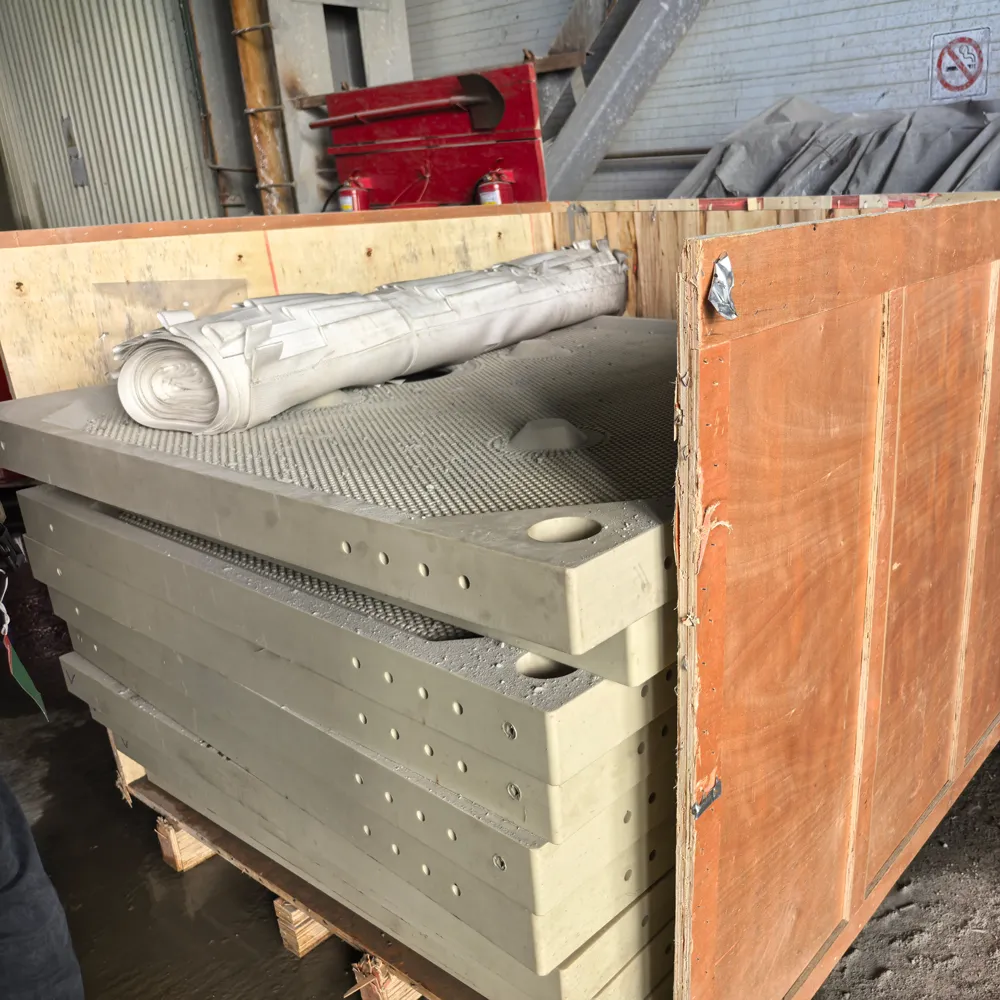The plate for filter press is of great significance in the filtration process. The details are as follows:
- Structure and Types
- Structure: Filter press plates usually have a flat or grooved surface. The flat surface plates are simple in structure and suitable for some simple filtration requirements. Grooved surface plates have grooves on the surface to support the filter cloth and guide the flow of filtrate.
- Types: There are mainly plate and frame filter press plates and chamber filter press plates. Plate and frame filter press plates are often used in combination with frames to form filter chambers. Chamber filter press plates have an integrated chamber structure, which is more convenient for operation and maintenance.
- Materials
- Metallic Materials: Such as cast iron and stainless steel. Cast iron plates have high strength and wear resistance but are prone to corrosion. Stainless steel plates have excellent corrosion resistance, high strength, and are suitable for filtering corrosive materials.
- Non-metallic Materials: Such as polypropylene (PP). PP plates have the advantages of good corrosion resistance, light weight, and low cost. They are widely used in various industries.
- Working Principle
- Filtration Process: When the filter press operates, the suspension is pumped into the filter chamber formed by the filter plates and filter cloth. Under pressure, the liquid in the suspension passes through the filter cloth and flows into the grooves on the filter plate surface, then is discharged through the channels at the corners of the plate. The solid particles are intercepted by the filter cloth and form a filter cake on the surface of the filter cloth.
- Washing and Discharge: If the filter press has a washing function, washing water can be introduced into the filter chamber through the filter plate to wash the filter cake. After washing, the filter cake can be discharged by opening the filter press and removing the filter plates.
- Applications
- Chemical Industry: It is widely used in the filtration and separation of chemical reaction products and waste liquids, such as in the production of chemical fertilizers, pesticides, and dyes.
- Mining Industry: Used for filtering and dewatering mineral slurries, improving the efficiency of mineral separation and recovery.
- Wastewater Treatment: In municipal and industrial wastewater treatment, filter press plates play an important role in sludge dewatering and solid-liquid separation.




